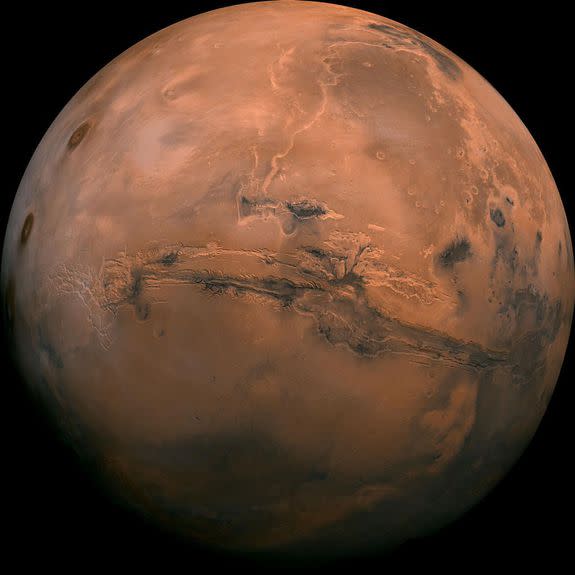China wants to go to Mars by 2020

China is aiming for Mars.
The nation reaffirmed its plan to send China's first lander to the red planet by 2020 in a white paper released by the Chinese government this week. The new paper lays out the nation's ambitious plans to explore the solar system with a variety of missions by the end of the decade.
If successful, the Mars mission would make China the second country to successfully soft-land a probe on Mars.
SEE ALSO: Now we know what caused Europe's Mars lander to crash
China's space plans also include "further studies and key technological research on the bringing back of samples from Mars, asteroid exploration, exploration of the Jupiter system and planet fly-by exploration," the white paper says.
"When conditions allow, related projects will be implemented to conduct research into major scientific questions such as the origin and evolution of the solar system, and search for extraterrestrial life," the white paper added.
Plus, China is aiming for the moon.
China is expected to send a lander to the far side of the moon by 2018, with another mission to the lunar surface planned for next year. The 2017 mission should involve a spacecraft that will be able to return samples of the lunar surface back to Earth.

Image: NASA/JPL-CALTECH
The country has been working toward deep space exploration for a number of years, but it got a relatively late start.
The nation didn't get its first satellite to orbit until 1970, a year after the United States landed NASA astronauts Neil Armstrong and Buzz Aldrin on the moon for the first time.
Today, China has launched people to orbit to live and work onboard small space modules in anticipation of building a larger space station sometime in the future, and the country has successfully operated a lander and rover on the moon before.
Mars, however, isn't an easy target for anyone.
Just this year, for example, a lander developed by the European Space Agency and Russia crashed into Mars instead of softly landing on the planet's rust-colored surface.
In total, only seven lander or rover missions to Mars have succeeded (assuming you don't count one Soviet mission that transmitted from the surface for 20 seconds in 1971), and all of them have been launched by the United States.
Mars could be a busy place in 2020.
The European Space Agency and Russia are planning to launch the second half of their joint mission to the red planet that year, and NASA is aiming to send a rover to the Martian surface that year as well. Plus, Elon Musk's SpaceX is also planning to send some kind of mission to Mars in 2020.
This timing isn't exactly a coincidence. Mars and Earth are favorably aligned to launch missions every two years, so aiming within that window makes sense for private companies and space agencies alike.
